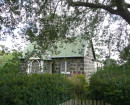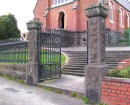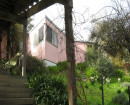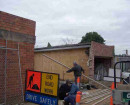Footscray Commercial Heritage Area
Barkly, Paisley, Nicholson and Hopkins Streets FOOTSCRAY, Maribyrnong City
-
Add to tour
You must log in to do that.
-
Share
-
Shortlist place
You must log in to do that.
- Download report
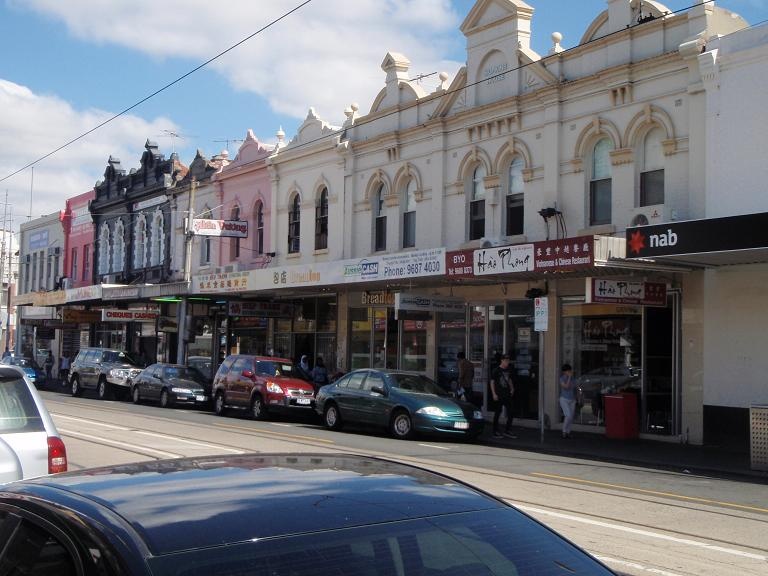

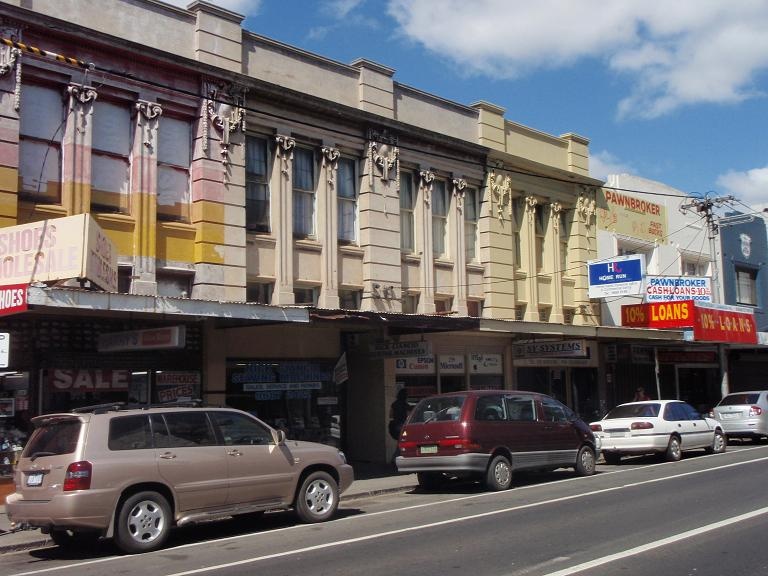
Statement of Significance
Statement of Significance
The Footscray Commercial Precinct is significant historically and aesthetically within the City because:
- the identified commercial buildings (particularly the upper level facades) within the precinct are the City's best expression of its two major commercial growth eras, the precinct being largely built up by World War One with a consistent visual character made up of:
- attached one and two storey cemented and face brick Edwardian and Victorian era shops and residences over,
- some individually significant inter-war examples and landmark buildings,
- all built to the street frontage,
- typically a trabeated facade evocative of Italianate design influences,
- near universal parapeted form,
- a repeating module determined by the Victorian-era shopfronts of 5 -6m, and
- no provision for on site motor vehicle parking as an indication of the pre-motor era. (Criterion A4)
- of the significant architectural contribution of individual developments such as the Barkly Hotel, Royal Hotel, Griffith's jeweller's shop and Carroll & Douglas (number 234-6 Barkly Street) which provide major focal points within the streetscape (Criterion F1);
- of the visual continuity and architectural ornament of the upper facades in Nicholson Street east and Paisley Street south, highlighted by individually notable examples such as number 155-7 Nicholson Street (Criterion E1) ;
- of the precinct's historical expression of the physical effect of a shift in major traffic routes and outlets, specifically the railway (Criterion A4) and
- it was the commercial centre of the former City of Footscray and the region over a long period (Criterion G1).
Australian Heritage Commission (AHC) criteria
The Australian Heritage Commission criteria consist of a set of eight criteria which cover social, aesthetic, scientific, and historic values. Each criterion has sub-criteria written specifically for cultural or natural values. The relevant criteria are:
A.4 demonstrates well the course and pattern of history, important historic events
E.1 aesthetic importance to the community or cultural group
F.1 design or technological achievement .
G.1 social importance to the community
-
-
Footscray Commercial Heritage Area - Physical Description 1
The general character of the Footscray Commercial Precinct is of attached one and two storey cemented and face brick Edwardian and Victorian era shops with residences over; in the precinct there are some individually significant inter-war examples and landmark buildings. All buildings are built to the street frontage and there is typically a trabeated facade evocative of Italianate design influences. Properties show a near universal parapeted form and a repeating module is determined by the Victorian-era shopfronts of 5-6m.The above character is punctuated by large structures (like the Barkly Theatre) and/or landmark corner buildings like the Moderne style Royal Hotel at the Droop St corner, and the Edwardian-era Plough Hotel and Greens Buildings. The last two buildings make up the corners of the Geelong Road and Barkly St crossing and provide an entry point to the precinct.
The impact of later, large and visually bland post WW2 redevelopments, such as Forges, is particularly evident on the west side of Nicholson Street, contrasting with the universally 5-6 metre frontage modules of the surrounding highly ornamented Victorian and Edwardian era shops. With the devotion to economy increasing with the advance in the 20th century, each new facade was simpler than the previous. Joined they form a two-storey flush wall to the shopping street where period expression is minimized. In addition to this later development, renovation of the Victorian & Edwardian-era buildings has often blurred their cultural contribution by removal of detail. One exception among the mid 20th century developments, is the Carroll & Douglas building which still strongly expresses its construction period. In contrast to this, the previous decorated eras are still easily recognized above the new cantilever verandahs and aluminium framed shopfronts. Each of the pre-Modern development periods can still be read through its surviving architecture and it is still this era which dominates certain parts of today's commercial area, particularly the east side of Nicholson Street (numbers125-163) and the south side of Paisley Street (numbers 1-31). These streetscapes offer the best historical expression and are the most architecturally pretentious of the commercial buildings in the city.Footscray Commercial Heritage Area - Physical Conditions
Physical Conditions: fair (disturbed, reasonably preserved)
Footscray Commercial Heritage Area - Integrity
Integrity: partially intact/intrusions
Modernization of the surviving Victorian and Edwardian-era shops has been largely confined to ground level and is visually separated from the generally original upper facades by new cantilevering verandahs. Despite these changes, in particular with the existence of the Nicholson St mall, reinstatement of the old post-supported verandahs and recessed-entry shopfronts offers great scope for sympathetic renewal of a largely neglected shopping precinct image. Among the once prestigious shop terraces (a collection of shops posing as one vast emporium), gradual freeholding of individual shops has led to visual segmentation of the grand rows: each passing shop owner/tenant introducing a new shopfront, new signs and painting the upper levels in contrasting colours to adjoining parts of the same row. The effect is visual clutter and denial of both the building's cultural expression and its potential part in a corporate retail promotion image.
Footscray Commercial Heritage Area - Historical Australian Themes
Thematic context
Australian Principal Theme Developing local, regional and national economies
PAHT Subtheme Marketing & retailing
Local Theme(s) Footscray and Yarraville Shopping CentresFootscray Commercial Heritage Area - Physical Description 2
Map (Melway) 42 C4
Boundary description Parts of Nicholson Street, Paisley Street, Hopkins Street and Barkly Street, with emphasis on original fabric from the Edwardian and Victorian-eras plus individually significant inter-war examples.
Heritage Significance City
Creation date(s) 1880s-1930s
Local Government Area City of Maribyrnong
Ownership Type Private & PublicHeritage Study and Grading
Maribyrnong - Maribyrnong Heritage Review
Author: Jill Barnard, Graeme Butler, Francine Gilfedder & Gary Vines
Year: 2000
Grading:
-
-
-
-
-
FORMER BARKLY THEATRE
 Victorian Heritage Register H0878
Victorian Heritage Register H0878 -
FOOTSCRAY RAILWAY STATION COMPLEX
 Victorian Heritage Register H1563
Victorian Heritage Register H1563 -
HENDERSON HOUSE
 Victorian Heritage Register H0183
Victorian Heritage Register H0183
-
'ELAINE'
 Boroondara City
Boroondara City -
-oonah
 Yarra City
Yarra City -
..eld House
 Yarra City
Yarra City
-
-






